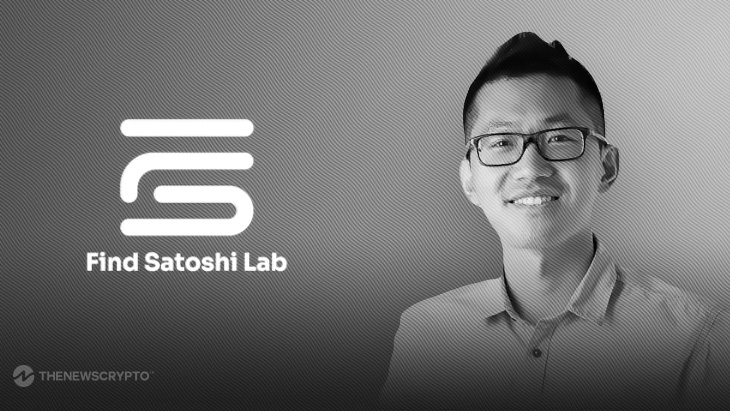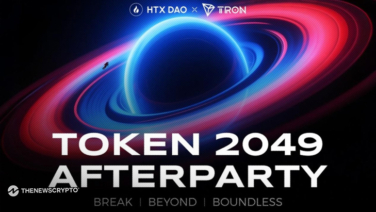GameFi and SocialFi have emerged as the desired horizontals within the expanding Web3 landscape, poised to redefine the digital experience. A new frontier for social media and an innovative perspective on gaming are being curated with the power of decentralization.
TheNewsCrypto had an intriguing conversation with Yawn Rong, the co-founder of Find Satoshi Lab (FSL), discussing how STEPN pioneered the move-to-earn (M2E) playbook and outlined its trailblazing roadmap within the web3 realm. He transitioned smoothly from brief yet deep knowledge-sharing to unveiling updates that would excite the STEPN community.

How are the FSL and STEPN teams preparing for the launch of Gas Hero on Polygon in December and can you unveil any intriguing elements that the community can look forward to?
Yawn Rong (YR): Currently, we are engaged in two key initiatives. First, is the gradual roll of white paper, allowing people to understand our mechanics step by step, without overwhelming them. Second, we’ve introduced the Gas Hero Badge program within STEPN. Through this program, we were able to bootstrap the initial user engagement for Gas Hero. Anyone who completed the Gas Hero Badge requirements can redeem their Badge and anticipate airdrop of Gas Hero in-game NFTs over time.
Additionally, we are launching the City Pioneer Program to recruit influencers from both Web2 and Web3 spaces to lead the development of their own cities within Gas Hero. By using real city names, users are most likely to join their respective cities, fostering quick and collaborative community building.
How has partnering with Apple, specifically integrating with ApplePay, enhanced STEPN’s user engagement as the first NFT-centric blockchain app?
YR: Enabling Apple Pay makes users bypass the hassle of making a Wallet via seed phrase and deposit token for gas. The user simply needs to buy an NFT Sneaker via Apple Pay and can start using it straight away. This dramatically reduces the user onboarding learning cost. We have seen new Web2 user onboarding much easier in this way.
What’s the current status of Generative NFT Tool (GNT) V3 on MOOAR and what’s your future outlook for AI-powered NFT generation?
YR: Currently, any user can use a text prompt to generate an NFT collection and customize metadata for up to 1,000 NFTs by burning some GMT. Alternatively, users can create personalized NFTs by training their own Profile Engine through the upload of some of their selfies.
We have also developed Creator Space and NFT launch tools for these creators so that they can keep their NFT holders informed of their progress. Many of these creators were initially STEPN users and now they are making their own NFT project.
AI-powered NFT enables people to make NFTs and gift them to other people at affordable cost. Many of these NFTs hold no financial value but a lot of emotional value and this is the part we really want to focus on. Because it enables us to curate users’ NFT journey and make them our long-term users.
How has the growth curve of the move-to-earn (M2E) games landscape evolved post the COVID-19 pandemic?
YR:It was parabolic in 2022, we were able to get 5.4 million people – and many of them for the first time use NFT to play a game. However the move-to-earn is not a game style, it is a user onboarding tool, hence once we have a lot of users attracted to us by this concept, our objective becomes how we can continuously provide value to these people.
Certainly, health benefit is one of them, we have heard a lot of feedback that people become fitter and healthier. Through STEPN and MOOAR, many users are now getting more involved in Web3 as creators.
We added additional features on top of the move-to-earn concept such as the achievement system, enabling us to retain users in the long term. Certain achievement badges entitle users to get airdrops. As product-driven builders, we always look to build new things and features to grow our user base
How do you see the evolution of the ‘play-to-earn’ model in terms of long-term user engagement and retention, considering your pioneering role in the space?
YR: Many people mistake “play-to-earn” for a business model, but it’s primarily a user acquisition tool. It helps you onboard your first batch of users. After that, it’s crucial to figure out how to encourage them to spend the tokens they earn. Without spending, everything declines. So, we have spent a lot of time building additional layers, not just product layers but also community layers.
People need to value certain in-game items emotionally. Once people start using the tokens they earn, the product becomes more sustainable. It is also essential to build a culture around the product. Thus, we have our own festivals, like STEPNEMBER and Trailblazer, to cultivate an environment.
We are transitioning from the focus on earning to lifestyle and emotional value. People discuss various topics within the community, like caring for newborns or dining out. We have even organized offline meetups, strengthening the social bonds within our community.
The GameFi space did witness the rise of Play-to-Earn (P2E) and Move-to-Earn (M2E) paradigms, but are there any other models poised to revolutionize the existing trends?
YR: For any successful web3 product out there, they need to design the product that fits the current market condition. Right now, anything related to any of the ‘-Fi’ will most likely not work. So we should predominantly focus on the new user experience. That means coming up with a new play style, new tokenomics, and new narrative. We believe that gamifying socials will bring the next million users to the Web3 space. The great thing is, that we can always integrate the -Fi element down the road when the timing is right.
How do you see NFTs evolving in the crypto space, and how do you plan to integrate them into your projects?
YR: NFTs have evolved rapidly, but it’s almost like a journey of religious evolution. Over time, we’ll likely return to the fundamentals. NFTs, in their purest form, represent emotional and sentimental value, not just financial value. We want to emphasize the emotional value of NFTs and create fun NFTs that focus on that, rather than solely adding more utility. NFTs should be more about collectibles and the history behind them, like collectible user journeys. We aim to make NFT trading less about utility and more about emotional and sentimental value.
One of the challenges in the crypto space is that a project’s success is often linked to token price. How do you handle this challenge, when token prices fluctuate, and people’s perceptions of a project can change quickly?
YR: Token price can be influenced by various factors and does not always reflect the true value of a project. Our focus lies in building new products, narratives, and features, leading in the next bull market. We want to offer higher utility and create a more interesting product, allowing the price to be a result of market discovery. We believe in long-term value over short-term price fluctuations.
NFTs should not only be viewed as mere tokens but as memories. Just for a moment, I recommend everyone to set aside the financial or serious aspects of NFTs and enjoy them for the fun they can provide.
Disclaimer: The information provided in this interview article is for informational purposes only. It is not intended to be, nor should it be construed as, investment advice, financial guidance, or a recommendation to make any specific decisions. Readers are encouraged to conduct their own research.








